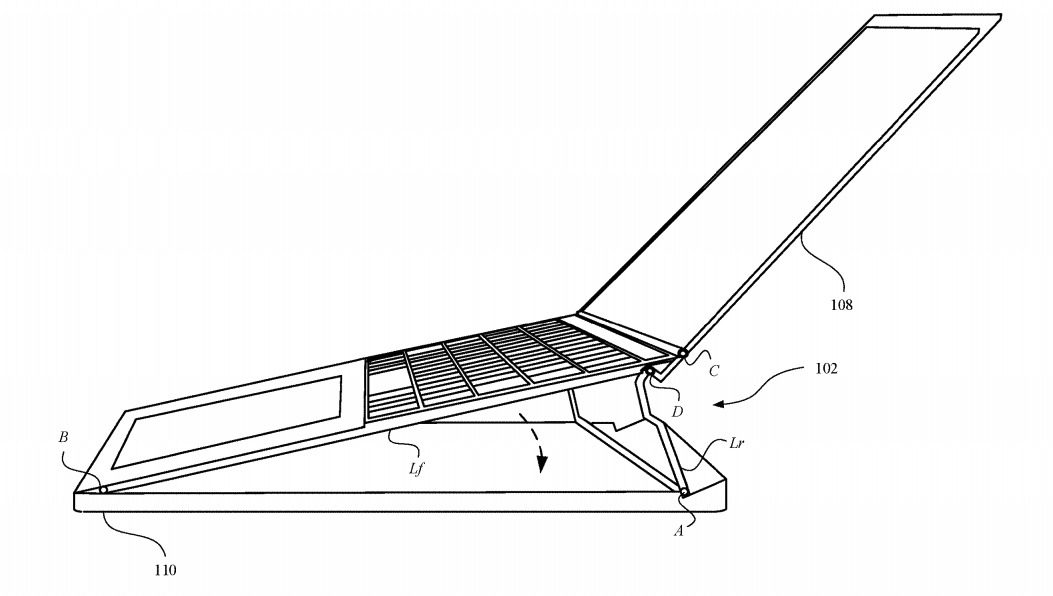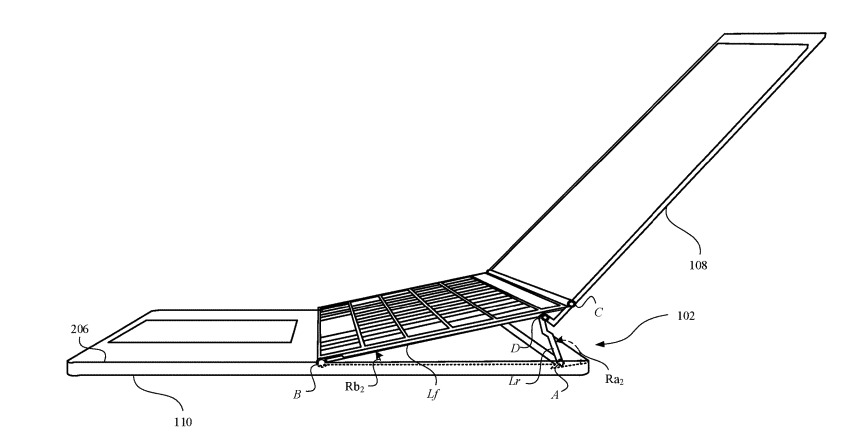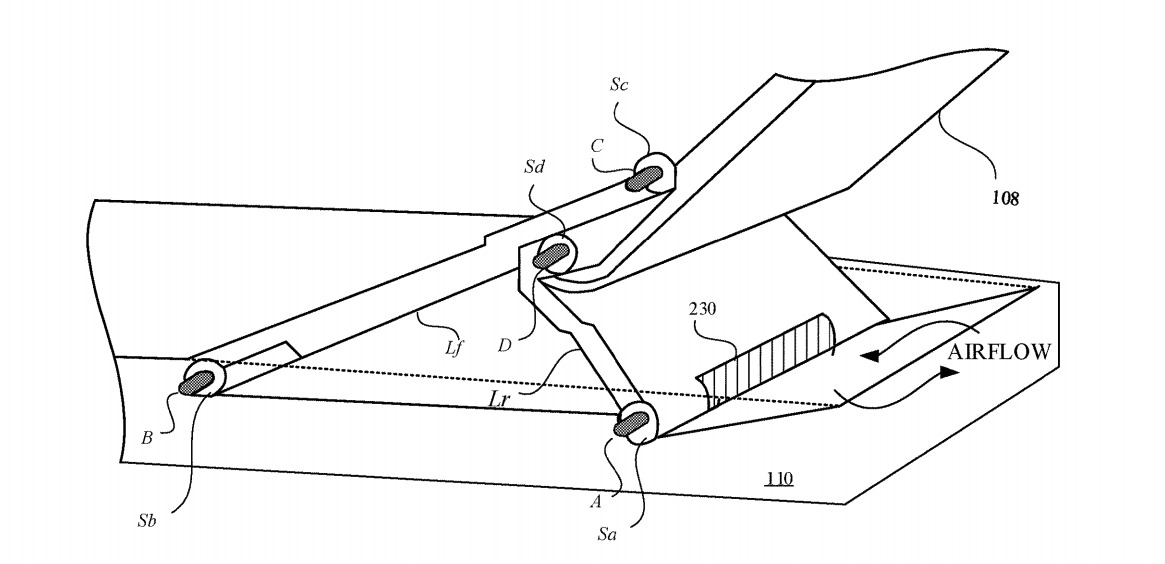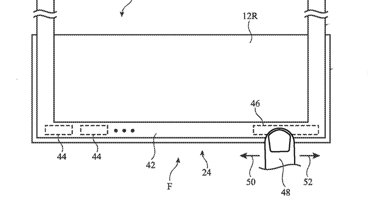The MacBook Pro may become more ergonomically friendly in the future, with Apple researching the addition of a hinge mechanism that raises the angle of the keyboard and the height of the display to create a more comfortable typing position.
Ergonomics is a major thing for computer users to consider, with long periods spent typing and using a mouse potentially resulting in ailments such as repetitive strain injury, and other aches. This has resulted in the creation of entire industries, where vendors try to sell accessories that aim to make computing healthier, by reducing the strain on the human body.
For products like a MacBook Air or MacBook Pro, there's only a limited number of things you can currently do to make it more ergonomic to use. Aside from angling the entire notebook to create a better typing position, there's always the option of attaching an external keyboard and mouse, and to effectively use it similar to a desktop Mac.
These solutions aren't as useful when on the move, as they would typically require bringing along extra hardware and accessories.
In a patent granted to Apple on Tuesday titled "Linkage assembly for a portable electronic device," Apple outlines a number of ways that it can make a MacBook more ergonomically friendly to users, without requiring external aids. In short, Apple thinks users could benefit from raising the rear part of the MacBook up to create a steeper writing angle.
Rather than creating a kickstand underneath, Apple goes down a more engineered route that involves keeping the main base of the MacBook on the surface that it is resting on. Instead, the top surface of the MacBook can instead raise up.
Two general forms are suggested for this maneuver, with the basic one being raising the back section so that the entire top surface is angled towards the user, including the trackpad section. An alternative is for just the keyboard element to raise up at the rear, angling the keyboard while keeping the trackpad flat.
In all scenarios, Apple envisions the display to raise up along with the keyboard, so it is always in view by the user. The bottom of the display will always meet the top of the keyboard, regardless of how it is raised.
The patent also suggests various linkage assemblies to allow the sections to rise up as the MacBook is opened up. The linkages would still enable the display to change angle to the user's preference, and in some cases will build in stopping points to prevent the display from going too far back.
As well as helping the typing angle, the hinge mechanism's raising of part of the top assembly also provides an opportunity to increase airflow to internal components. The underside of the keyboard could include vents and fan exhausts, hidden from view from the user, with hot air being deflected back and away by the keyboard.
The idea isn't just limited to MacBooks. In some drawings, Apple suggests that such a display and keyboard assembly could be built into a table. While it would stay flush with the rest of the surface when the display is lowered down, opening it up will raise the keyboard and display up to a more comfortable position.
The patent lists its inventors as Edward J. Cooper, Ari P. Miller, Kevin M. Robinson, and Ian A. Guy. It was filed on May 28, 2019.
Apple files numerous patent applications on a weekly basis, but while the existence of patents don't guarantee a product will use the ideas in the future, they do demonstrate areas of interest for Apple's research and development teams.
Redesigning the core appearance of its Mac products have been the subject of a few patents, and typically go out in radical directions.
One patent from May 2020 indicate Apple considered creating a bendable MacBook design, where it is made from a single piece of material. A flexible section in the middle would act as the hinge for the device.
While not portable, Apple has also suggested creating a new version of iMac using a single sheet of glass. The patent application from January 2020 proposed a display with a curved glass base that would serve as a place for a keyboard to go, while a wedge would act as a chock to hold the entire system in place.
 Malcolm Owen
Malcolm Owen







-xl-m.jpg)


-m.jpg)






 Thomas Sibilly
Thomas Sibilly
 Wesley Hilliard
Wesley Hilliard
 Christine McKee
Christine McKee
 Amber Neely
Amber Neely
 William Gallagher
William Gallagher


 Mike Wuerthele
Mike Wuerthele








11 Comments
I was envisioning something like this for a laptop keyboard with 3 to 5 mm key travel. In the end though, seems a very minor benefit for a lot of complexity. There are keyboard aficionados, but the keyboard just needs to work reliably, and the vast majority of people will be ok. It's the reliability, not the feel, and having say a laptop keyboard with 3 to 5 mm of clicky travel just isn't going to sell more laptops.
They would be better off with bigger displays, the usual engineering, and getting as much great software (engineering, Unix, games, etc) as they can on macOS.
More excited for AR glasses that can extend the visual display of a laptop or whatever display.
I hope they never do this. That’s worse doe your hands and wrists than a flat keyboard.
I realize those are crude markups, but none of those designs look "sexy".
PC laptops do this, to some extent, which helps in cooling and typing angle. Nothing like the kludges in those diagrams, though!
After years (decades actually) of obsessively chasing grams, millimeters, and elegance, they want to design this??? I hope it never sees the light of day.
Wrong: